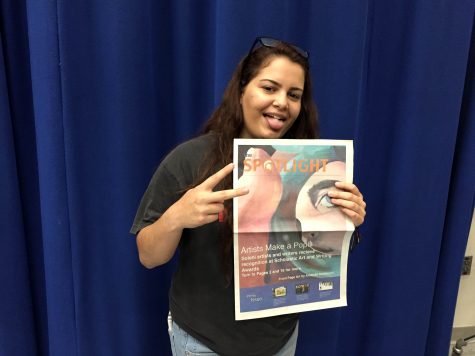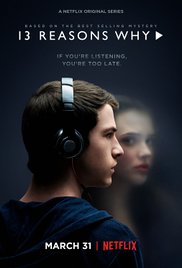‘Thirteen Reasons Why’ Misrepresents Serious Issues
“Hello, boys and girls. Hannah Baker here. Live and in stereo. No return engagements. No encore. And this time, absolutely no requests. I hope you’re ready, because I’m about to tell you the story of my life. More specifically, why my life ended. And if you’re listening to these tapes, you’re one of the reasons why.”
These haunting lines are the first glimpse viewers have into the psyche of Hannah Baker in Netflix’s new original series, “Thirteen Reasons Why.” Based on the 2007 novel of the same name by Jay Asher, each episode of the television show features one of Baker’s thirteen recorded cassette tapes that explain the reasons why she committed suicide. Everyone on these tapes know what each other has done: their names, their stories, their lies, and their contributions to her death.
Starting this series I was full of mixed emotions. I had not read the book prior to watching the series, and I had only the description on Netflix and the opinions of others to go by.
The first episode reveals the contents of the first tape, detailing Hannah’s relationship with a boy named Justin, and how the truth about what happened between the two of them spiraled out of control. As Hannah records her thoughts she tells her truth. However, when confronted, Justin’s truth falls short of what actually happened.
Justin is a handsome and athletic character, and is portrayed as selfish and mind numbing. Later on in the tapes, you find out how he covers up something that happens to his girlfriend, Jessica. Worst boyfriend in history.
The second tape focuses on another classmate, Jessica. Hannah and Jessica form a friendship with a boy, Alex. Jessica’s tape entails how their friendship was, least to say, disappointing. The third tape goes on to focus on Alex, a boy who would rather conform then be singled out, abandoning Hannah and wedging himself into a group of hotheaded guys.
The tapes continue on like this for the rest of the series, each detailing a different person that contributed to her suicide, from a boy who tried to take advantage of her on a date, to a girl that she got into an accident with, accidentally resulting in the death of a classmate. The viewers learn that everyone lies, except Hannah.
The episodes bring attention to suicide and depression in school, which agitates the main character, Clay Jensen. Clay is an introvert, antisocial high schooler that Hannah has a particularly strong connection with. While he was head over heels for her, she tried to mask her feelings for him. After listening to every tape, he feels he must have some sort of revenge for the pain his classmates caused Hannah. But Clay’s tape is different.
Dealing with topics such as sexual abuse, drug use, and bullying, the characters fulfilled their roles well. However, the series glorified suicide with the final scene, which shows Hannah ending her life in a very graphic way. It shows the false illusion that suicide is easy, short, and in reach, but in actuality, it is far from that.
Throughout the show, there wasn’t much awareness brought to mental illness. Many say the graphic suicide scene causes pain to those who have experienced thoughts of ending their own lives. I had wish there was more attention brought to how people could have spotted her mental illness.
I wouldn’t recommend this series to viewers struggle with mental illness. Instead, if “Thirteen Reasons Why” intrigues anyone, I recommend reading the book, which brings more awareness to mental health, listing recognizable signs of someone suffering from depression and how that someone might act if they were facing the question of taking their life.
Seeing through the eyes of Hannah, I must say the insight was quite vague. The television show didn’t bring as much light to depression that is necessary. The topic should have been shown with more realistic consideration.

Sophomore Sarah Walters is a first-year staff reporter for the Spotlight. In addition to writing for the newspaper, Sarah participates in the Art &...












